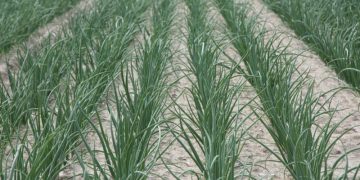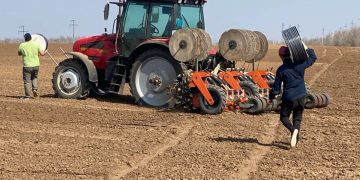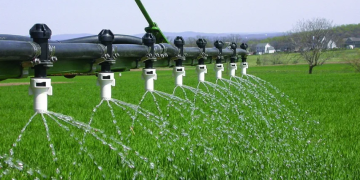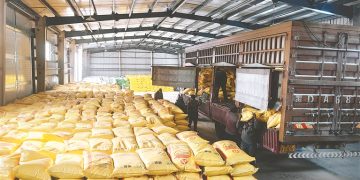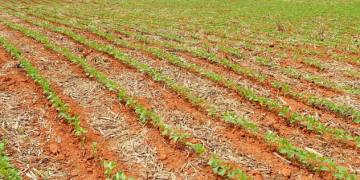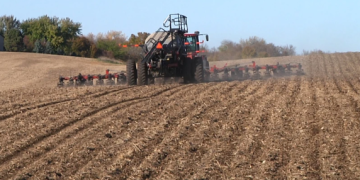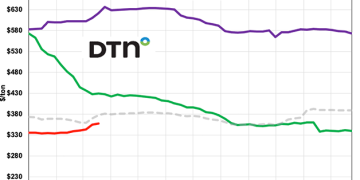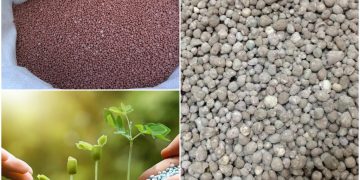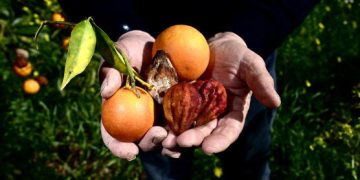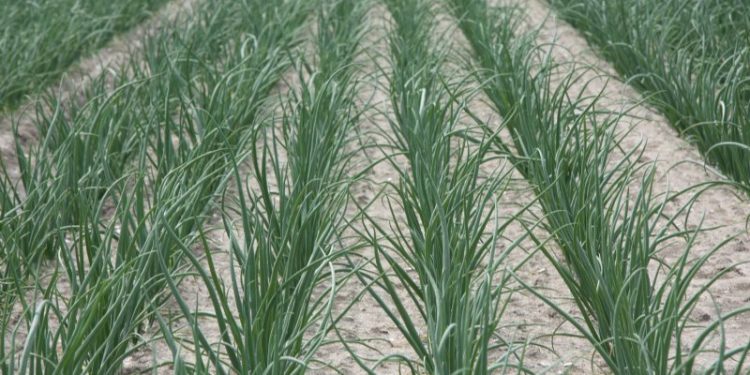Il y a de fortes chances que l'outil vydate ne soit plus disponible à partir de 2024. L'Université et la Recherche de Wageningen (wur) s'attend à ce que les producteurs d'oignons disposent à terme d'une capacité suffisante pour couvrir ces pertes.
Des chercheurs du WUR ont chargé le projet du réseau Uireka d'énumérer les possibilités d'alternatives au vydate dans la culture de l'oignon. Une attention particulière a été portée à la lutte contre les nématodes parasites des plantes, ainsi qu'à la lutte contre certains insectes nuisibles.
Le chercheur Leendert Molendijk a expliqué mardi les résultats du WUR lors de la journée sur le thème de l'oignon de la foire agricole du nord et du centre des Pays-Bas à Dronten, dans le Flevoland. D'après les informations de Corteva, Molendijk s'attend à ce que Vydate soit encore disponible au cours de la prochaine saison de croissance. « Mais pour 2024, les perspectives ne sont pas favorables. En raison d'exigences supplémentaires, le permis devrait expirer à ce moment-là.
« La réinscription de Vydate est en liberté »
D’ailleurs, le chercheur suggère que les producteurs d’oignons néerlandais peuvent très bien se passer du Vydate. « Nous avons souvent perdu des ressources importantes et à chaque fois nous avons trouvé des solutions. La culture de notre pays est à un niveau élevé. Nous avons des producteurs intelligents qui peuvent y faire face. En fin de compte, cela pourrait même bénéficier à notre position concurrentielle.
Pas de remplacement clair
Pour lutter contre les insectes dans les oignons, le vidat appliqué sous forme de granulés au moment du semis offre principalement une protection contre la mouche du haricot et la mouche de l'oignon au cours des six premières semaines de la saison de croissance. Pour les voyages, selon Molendijk, ce traitement a peu ou pas d'effet. «Il existe des alternatives à la mouche du haricot et à la mouche de l'oignon, mais il n'existe pas de substitut clair au Vydate.» Tout d'abord, les producteurs doivent rechercher une solution dans le cadre d'une approche intégrée.
Intégré est également le mot clé lorsqu'il s'agit de lutter contre les nématodes dans les oignons non vidés. Le chercheur estime que l'action de l'agent biologique Nemguard n'est pas encore claire pour le moment. « Certains prétendent avoir un certain effet contre les espèces de nématodes, mais il manque encore des recherches concluantes pour le confirmer de manière adéquate. Nous avons encore des questions importantes pour le détenteur de l'autorisation.
Pour Molendijk, une approche intégrée de la gestion des nématodes fait partie de la gestion intégrée des cultures. Ceci repose sur les principes de base suivants : plan de construction, sélection de la variété et de la méthode de culture, exploration et échantillonnage, travail du sol et contrôle ciblé. « Pour lutter contre les nématodes, les producteurs doivent élaborer un plan complet basé sur le calendrier des nématodes. Il indique également quels nématodes causent le plus de dégâts aux oignons.
Évitez les préfruits sensibles
Comme exemple des possibilités de lutte contre les nématodes intégrés à l'oignon, le chercheur commence par les nématodes nodulaires des racines. « Meloidogyne hapla se trouve principalement dans les zones de culture du nord. Si l'échantillonnage montre que ce nématode est présent dans le sol, alors les avant-fruits monocotylédones comme les céréales peuvent aider à réduire la pression. Chez M. chitwoodi, M. fallax et M. naasi, au contraire, il faut éviter les herbes ou autres fruits sensibles.'
Pour les nématodes des tiges, l'inondation semble être la seule solution de lutte efficace, et c'est d'ailleurs également le cas pour M. chitwoodi et M. fallax. Les nématodes libres tels que les trichodoridés se reproduisent fortement sur les graminées et il est bon d'abaisser la nappe phréatique pour les contrôler. Les dommages causés par le nématode des racines Pratylenchus penetrans peuvent être facilement limités lors de la culture de tagètes dans le cadre d'une rotation de cultures, rapporte Molendijk.
« En fin de compte, ce ne sont là que quelques-unes des nombreuses mesures que les producteurs d’oignons peuvent prendre. Divers systèmes d'aide à la décision sont disponibles pour plus d'informations sur les options de remplacement de Vydate. Ils constituent la base d’un plan d’action complet contre les nématodes et prennent également en compte les champignons du sol. » explique le chercheur.
Le webinaire de la construction biosourcée a le vent en poupe, est-ce une opportunité pour les agriculteurs ?
La construction biologique est à la mode. Le gouvernement veut faire pression en ce sens. Cela ouvre des opportunités aux agriculteurs impliqués dans l’agriculture. Mais qu’est-ce qu’une conception biologique ? Qu’est-ce que l’homme politique veut obtenir par là ? Et que peuvent faire la culture, la recherche et la filière ? Est-il possible de tirer profit de la culture de cultures à fibres ? Bo Akkerbau, le réseau Akkerbouw des praticiens du développement durable et Nieuwe Oogst organisent un webinaire pour les agriculteurs sur les opportunités offertes par ce nouveau développement.
